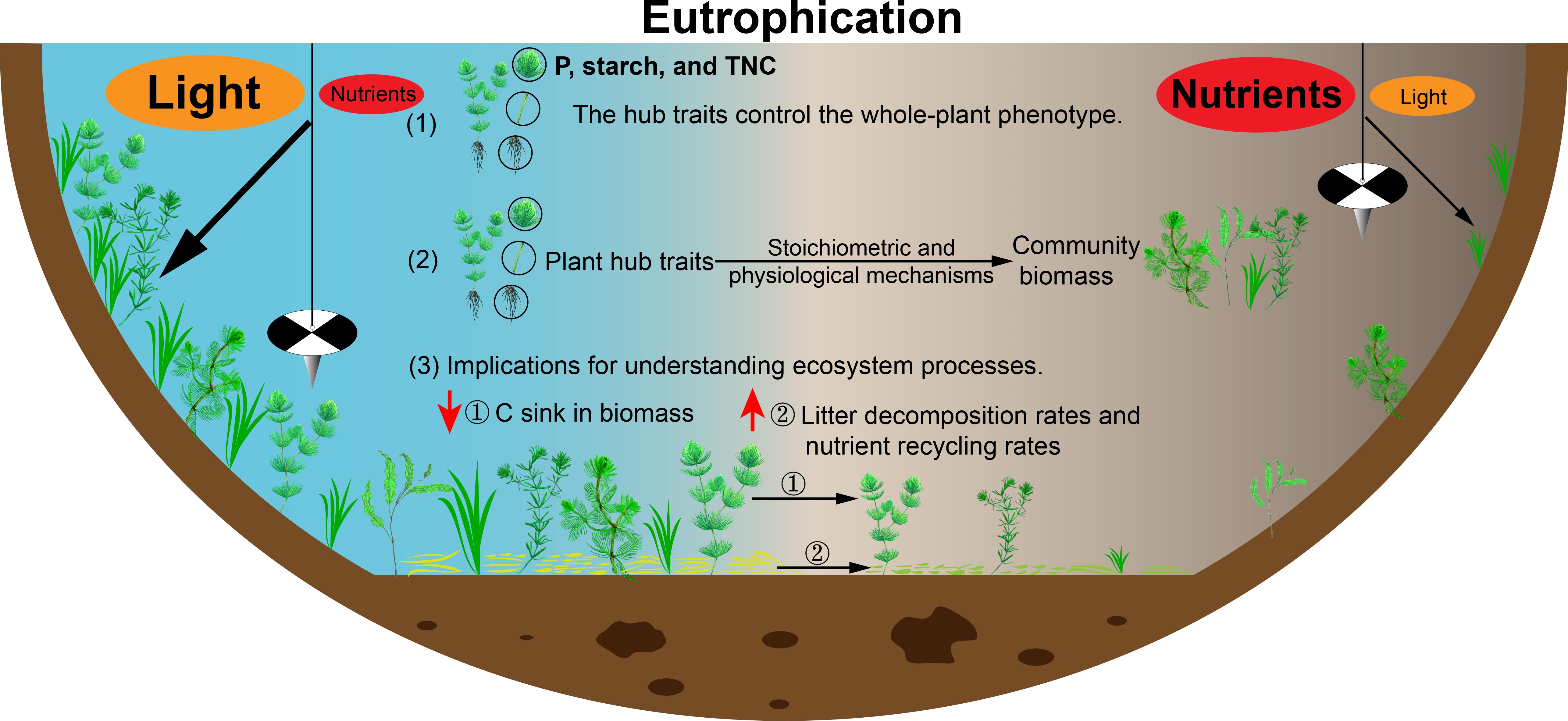Highlights
Stoichiometric and Physiological Mechanisms Explain Relationships between Plant Traits and Community Functioning
The research group led by Prof. XIE Ping from the Institute of Hydrobiology (IHB) of the Chinese Academy of Sciences revealed that the stoichiometric and physiological mechanisms underlying the structure and functioning of freshwater ecosystem were critical for understanding ecosystem processes. The results were published in Water Research.
Eutrophication alters nutrient and light availability in the water column, thus strongly influences plant stoichiometric characteristics and physiological status. However, to clarify the decline of submerged macrophytes, the mechanisms linking plant functional traits with ecosystem structure and functioning have not yet been fully elucidated.
To understand this, researchers first constructed a plant trait network at the whole-plant level to determine the hub traits of submerged macrophytes that play central regulatory roles in plant phenotype.
Their results suggested that organ (leaf, stem, and root) phosphorus (P), starch, and total nonstructural carbohydrate (TNC) contents were hub traits. Organ starch and TNC were consistent with those in the experiment-based network obtained from a three-month manipulation experiment.
Using field investigation data, Xie and his team next investigated the mechanisms underlying the relationships between the hub traits and vital aspects of ecological performance.
They found that stoichiometric homeostasis of P (HP), starch, and TNC were positively associated with dominance and biomass at the species level, and community biomass at the community level.
What’s more, structural equation modeling clarified not only a hypothesized pathway from eutrophication to water clarity and community TNC, but also combined effects of community TNC and HP on community biomass. This means that ecosystems dominated by more homeostatic communities tended to have more carbon (C)-rich compounds in relatively oligotrophic conditions, which promoted the primary production of macrophytes. Eutrophication was determined to affect community structure by inhibiting the predominance of more homeostatic species and the production of carbohydrates.
Using field investigation data, researchers finally elucidated the combined effects of light and nutrient availability on primary productivity and nutrient:C ratios of submerged macrophytes and then discussed their implications for nutrient cycling in lakes.
They revealed that reduced community biomass and increased nutrient contents and nutrient:C ratios in plants induced by eutrophication implied a decrease in the C sink in biomass and may potentially lead to an enhancement of litter decomposition rates and nutrient cycling rates in lakes.
In summary, stoichiometric and physiological mechanisms linking plant traits with ecosystem structure have important implications for understanding ecosystem processes, and these results may contribute to practical management to achieve the restoration of submerged macrophytes and ecosystem services.

The graphical abstract about the effects of eutrophication on the structure and functioning and ecological processes of aquatic ecosystem (Credit: IHB)